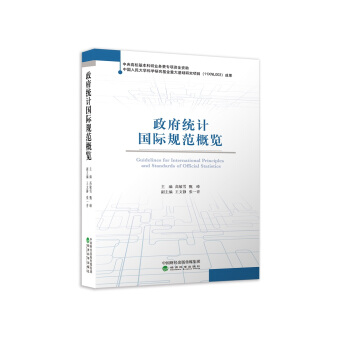![Economics—HL&SL for the IB Diploma [IBDP(国际高中文凭课程)经济辅导书]](https://pic.tinynews.org/12167240/58f6b912Ne2a207f3.jpg)

具体描述
编辑推荐
有些学生一接触IB经济学的时候就“开窍”了,而大部分学生则找不到方向,也容易一直迷失下去。IB经济真的不简单。你想写出更棒的IB经济答卷吗?想知道什么样子的答题思路才是IB思路吗?那么本书正是为你准备的。本书显著的特色正是建立在“认知学徒制”的基础之上的。本书不仅提供了概念解释和例题答案,还进一步说明了我们做出这些解释和答案的缘由。本书的重点在于经济学论述题,目的在于提高你的效率。内容简介
本书是为国际文凭课程大学预科项目(IBDP)设计的经济学辅导书。全书分为21章,每章内容由Key concepts,Example questions and answers和Exercises这3部分组成。前两部分在概念解释和例题答案的基础上,进一步说明了做出这些解释和答案的缘由。习题部分不仅提供了系统的解题训练,还提供了一些IB-style exercises以便学生检验自己的水平。本书重点在于经济学论述题的强化训练,有助于IBDP考生形成专业的IB答题思路,写出更好的IB经济答卷。作者简介
黄乐川,2008年取得伦敦政治经济学院经济历史硕士学位;曾任教于上海平和学校,教授IB经济四年;后赴美留学,2014年获得哈佛大学教育系教育心理学硕士学位。现于佐治亚大学攻读教育技术博士;同时不忘IB经济教学,长期通过微博发布学习资源。赵祎迪,2006年至2011年在荷兰格罗宁根大学研修国际经济与商务(本科)、金融(硕士);IB经济考官,上海平和学校经济教研组组长、竞赛负责人;有多年IB和AP的教学经验;任教的2014届经济HL均分6.22,2015届经济HL均分6.19,2016届经济HL均分6.63。
目录
1
Demand, supply, and the market equilibrium1Key concepts1
The market1
Ceteris paribus1
The law of demand2
Determinants of demand3
The law of supply3
Determinants of supply4
Movement (quantity demanded/supplied) vs. shift5
Why does price tend to form around the equilibrium price5
How can the market equilibrium be changed6
Resource allocation and the signaling and incentive functions of price7
Scarcity7
Market efficiency8
Example questions and answers8
Question group 1: Determinants of demand and supply8
Question group 2: The signaling and incentive functions of price10
Exercises122
Elasticities14Key concepts14
Price elasticity of demand (PED)14
PED, revenue, and marginal revenue15
Cross price elasticity of demand (XED)16
Income elasticity of demand (YED)16
Price elasticity of supply (PES)17
Example questions and answers18
Question group 1: Determinants of elasticities18
Question group 2: Usefulness of the knowledge of elasticities20
Exercises263
Taxes, subsidies, and price controls
(government intervention in the free market)29Key concepts29
Indirect tax29
Market outcomes of an indirect tax30
Impact on stakeholders from an indirect tax31
How to find the tax burden (tax incidence) for consumers and
producers (HL only)31
Subsidy32
Price ceilings (maximum prices)33
Price floors (minimum prices)34
Impacts on stakeholders35
Example questions and answers35
Question group 1: Comparing the effects of government interventions35
Question group 2: Government intervention vs. the free market40
Exercises474
Market failure49Key concepts49
Market failure49
Social welfare and allocative efficiency50
Public goods51
Excludability and rivalry51
Common access resources52
Externalities53
Positive externality of production54
Positive externality of consumption (merit goods)56
Negative externality of production57
Negative externality of consumption58
Asymmetric information (HL only)59
The abuse of monopoly power (HL only)59
How to explain that a certain case is one of market failure60
Common evaluation perspectives on government intervention
in market failure61
Example questions and answers61
Question group 1: Explaining market failure61
Question group 2: Evaluating government responses to market failure64
Exercises675
Cost, revenue, and profit (HL only)69Key concepts69
The short run (microeconomics)69
The law of diminishing returns70
The concept of the “margin”70
Economic cost71
Opportunity cost71
Marginal cost71
Average revenue, marginal revenue and total revenue71
The long run (microeconomics)72
LRAC and (dis)economies of scale73
Economic profit/loss74
The break even point and the shut down point74
How MC and MR help us find the profit maximizing quantity of
production75
How to find profit/loss with AC and AR76
Example questions and answers77
Question group 1: SRAC and LRAC77
Question group 2: Profit maximization80
Exercises846
Market structures (HL only)88Key concepts88
How market structures compare88
Perfect competition89
Monopolistic competition90
Oligopoly90
Game theory: the prisoner s dilemma91
Monopoly92
Common barriers to entry93
Market structures and efficiencies93
Example questions and answers94
Question group 1: The short run and the long run94
Question group 2: Comparing market structures97
Exercises1027
Price discrimination (HL only)105Key concepts105
Price discrimination105
Conditions for price discrimination105
Third degree price discrimination106
Exercises1078
The macroeconomic equilibrium108Key concepts108
Aggregate demand (AD)108
The macroeconomic short run and long run111
Short run aggregate supply (SRAS)111
Long run aggregate supply (LRAS)112
The new classical short run/long run transition113
Keynesian aggregate supply114
The Keynesian multiplier (HL only)115
Example questions and answers115
Question group: The short run and the long run115
Exercises1229
Unemployment124Key concepts124
Unemployment124
Unemployment rate124
Cyclical/demand deficient/Keynesian unemployment125
Frictional unemployment, structural unemployment, and seasonal
unemployment126
Why unemployment is undesirable127
Can unemployment be eliminated127
Example questions and answers127
Exercises12710
Inflation130Key concepts130
Inflation130
Consumer price index (CPI)130
Core inflation131
Producer price index (PPI)131
Macroeconomic objective: low inflation131
Demand pull inflation132
Cost push inflation132
Policy solutions to inflation133
Phillips curve133
Example questions and answers133
Question group: Consequences of inflation and deflation133
Exercises13611
Economic growth138Key concepts138
Economic growth138
Gross domestic product (GDP)138
“Real” vs. “nominal”138
The production possibilities curve (PPC)139
Investment and growth140
Consequences of economic growth140
Example questions and answers141
Question group: Economic growth and the standard of living141
Exercises14412
Equity in the distribution of income146Key concepts146
Equity vs. equality in the distribution of income146
The market economy and equality146
The market economy and equity147
Income redistribution policies and efficiency147
The Lorenz curve and the Gini coefficient147
Absolute poverty and relative poverty148
Ways to mitigate income inequality/inequity149
Tax as a means to income redistribution149
Transfer payment150
Example questions and answers151
Exercises15113
Macroeconomic objectives and policies153Key concepts153
Demand side policies153
Fiscal policy154
Fiscal policies and AD154
Automatic stabilizers155
Fiscal policies and long term growth (or the supply side effects)155
The effectiveness of fiscal policies155
Monetary policy157
What to target? Money supply, interest rates, or inflation rate157
Monetary policies and AD158
The effectiveness of monetary policies158
Supply side policies159
Interventionist supply side policies159
Market based supply side policies160
Policies, theoretical perspectives, and macroeconomic objectives161
Conflicts among macroeconomic objectives162
Unemployment rate, inflation rate, and the Phillips curves(HL only)163
Example questions and answers164
Question group 1: Fiscal/monetary policies vs. supply side policies164
Question group 1: Conflicts among objectives and policies173
Exercises17814
Measurement problems180Key concepts180
Macroeconomic variables and measurement180
Example questions and answers181
Question group: Difficulties in measurement181
Exercises18315
Free trade vs. protectionism184Key concepts184
Free trade184
Absolute advantage (HL only)185
Comparative advantage (HL only)186
Limitations of the theory of comparative advantage (HL only)187
The World Trade Organization (WTO)188
Trade protectionism189
The base model of international trade190
Tariff191
Quota192
Subsidy193
Administrative barriers195
Example questions and answers195
2 mark definitions195
4 mark explanation questions195
8 mark evaluation questions197
Exercises19916
Exchange rate201Key concepts201
Exchange rate201
Floating exchange rate system201
Factors that influence the exchange rate201
Changes in exchange rates in a floating exchange rate system202
Evaluating the free exchange rate system203
Fixed exchange rate system204
Changes in exchange rates in a fixed exchange rate system204
How central banks fix the exchange rate204
Evaluating the fixed exchange rate system205
Managed exchange rate system205
Consequences of an overvalued currency206
Example questions and answers206
2 mark definitions206
4 mark explanation questions207
8 mark evaluation questions208
Exercises21117
Balance of payments213Key concepts213
Balance of payments213
Current account213
Capital account214
Financial account214
The foreign exchange reserves215
Relationship between these accounts215
Current account deficit216
Implications of a persistent current account deficit (HL only)216
Methods to correct a persistent current account deficit (HL only)216
The Marshall Lerner condition (HL only)217
The J curve218
Current account surpluses218
Implications of a persistent current account surplus (HL only)219
Example questions and answers219
2 mark definitions219
4 mark explanation questions219
8 mark evaluation questions220
Exercises22318
Economic integration and terms of trade225Key concepts225
Economic integration225
Levels of economic integration225
Preferential trade agreement (PTA)226
Free trade area (FTA)226
Customs union226
Common market226
Comparing FTA, customs union, and common market (HL only)227
Economic and monetary union227
Trade creation (HL only)228
Trade diversion (HL only)229
Terms of trade (HL only)229
Short run causes to changes in terms of trade (HL only)230
Long run causes to changes in terms of trade (HL only)230
Example questions and answers231
2 mark definitions231
4 mark explanation questions231
8 mark evaluation questions232
Exercises235
……
前言/序言
有些学生一接触IB经济学就“开窍”了,而大部分学生则找不到方向,容易一直迷失下去。对于后一类学生来说,参考别的同学的优秀答题范例固然有用,但轮到自己答题时还是不行——本来没有信心的,现在可能还是没有。我们知道,IB经济真的不简单。你呢?你想写出更棒的IB经济答卷吗?想知道什么样子的答题思路才是IB思路吗?那么本书正是为你准备的。我们在前言之后加入了一个“How to use this book”的章节。你可以通过它了解本书具体的使用方法。不过在此之前,我们还是想稍微介绍一下指导本书设计方向的理念: 认知学徒制(cognitive apprenticeship)。“学徒”的概念历史悠久。学徒跟着师傅在工场实习,逐渐通过观察和练习来掌握知识技能。学徒制之所以有效,是因为学徒想要学习的技能是“可见”的。在课堂里可就不一样了: 教师经常告诉学生该做什么,却不一定会说明每一步背后的原因,学生也就“看不见”教师大脑里的解题过程。认知学徒制就是要让教师把思维的过程表达出来,这样学生在解题时就有了明确的可以模仿的对象 Collins A, 2006. Cognitive apprenticeship[C]//R. Sawyer (Ed.). The Cambridge handbook of the learning sciences. New York: Cambridge University Press: 4760.。本书最显著的特色正是建立在“认知学徒制”的基础之上的。本书不仅提供了概念解释和例题答案,还进一步说明了我们做出这些解释和答案的缘由。我们认为最差的应试策略是背书,虽然说背书在某种程度上来说,帮助学生解决了语言组织问题。而最佳的应试策略则是在理解消化书本的基础上根据题目的要求来回答。本书两方面都照顾到了——要守住IB 5分的话,背本书提供的解释就好了;要冲击IB 7分的话,则应该尽力去理解本书中的各种注释条目。选择权在你。不论你怎么选,本书的目的都在于提高你的效率。这本书的篇幅较长,因此不能没有重点。我们认为论述题(essay questions)对于非英语母语的学生来说是最困难的,特别是没有接受过系统论述题训练的中国学生。鉴于论述题集中于Paper 1和Paper 2,因此本书将关注点放在了这两张考卷上。Paper 3以数学为主,对中国学生来说压力较小,所以我们并没有将其纳入本书的讨论范围。为了便于IB学生使用,本书的文字正斜体和经济学图等格式均根据IB经济学惯例,并参照IB经济学考纲及国际教材的格式规范。本书能够最终成稿,离不开戴菁和王文轩两位老师提供的宝贵的审稿意见。在此我们向两位老师表示由衷的感谢。对于本书,虽然我们已尽心去写,力求让学生能够理解每一张考卷的考点,但要做到完美显然是不可能的。我们期待读者的反馈,这样才能让我们把本书改得越来越完善、越来越实用。用户评价
这本书在内容组织上的严谨度,简直达到了近乎偏执的程度,每一个术语的定义、每一个图表的标注,都经过了反复的推敲和核实,让人感到一种无与伦比的可靠性。在我深入阅读的过程中,我几乎找不到任何一处信息上的模糊地带或潜在的争议点,作者似乎已经将学术界中所有主流的解释和主流的争议都梳理完毕,并以一种非常中立且详尽的方式呈现了出来。这种对准确性的执着,对于一门需要精确表达的学科来说,是至关重要的品质。尤其是在涉及国际贸易协定或宏观经济政策分析时,书中引用的数据来源和理论依据都清晰可见,使得读者可以放心地将书中的内容作为自己论证的基础,而无需花费大量时间去交叉验证其可靠性。此外,书中对不同经济学派观点的平衡呈现也做得非常出色,它没有偏袒任何一方,而是将各种流派的核心论点、优势与局限性并置,鼓励读者进行批判性思考,而不是盲目接受单一观点。这种对知识全貌的尊重和展现,极大地提升了这本书的学术价值,让它不仅仅是一本应试指南,更是一部具有参考价值的严肃学习资料。
评分从一个长期被传统学习方式束缚的读者的角度来看,这本书最令人振奋的地方在于它成功地培养了一种“经济学家的思维模式”,而非仅仅是知识的灌输。它似乎在潜移默化中,教导读者如何去“像经济学家一样思考问题”。书中大量穿插的“批判性思维挑战”环节,往往不直接给出答案,而是提出一个两难的经济困境,要求读者运用已学工具去分析潜在的短期与长期后果,并权衡不同的利益相关者之间的权衡取舍。这种训练模式,将学习从记忆知识点提升到了应用和决策制定的层面。我发现,在处理完书中的一系列复杂问题后,我开始不自觉地在日常生活中也运用这种“机会成本”或“边际效用”的分析框架来审视决策,这是一种非常深层次的学习转化。这种思维框架的建立,是任何考试或评估中最宝贵的收获,因为它具有极强的迁移性。这本书没有把我塑造成一个只会背诵定义的机器,反而像一个经验丰富的老手,引导我掌握了分析复杂系统的工具箱,让我对未来独立探索经济学领域充满了信心和期待。
评分这本书的装帧设计简直是一场视觉盛宴,色彩搭配和排版布局都透露出一种精致与专业并存的气质。初次上手时,那种厚实而又恰到好处的重量感,以及封面那种略带磨砂质感的触感,都让人对内部的内容充满了期待。书脊处的字体设计简洁有力,即便是放在书架上,也显得格调不凡,完全不像一些教科书那种冷冰冰的刻板印象。内页的纸张选择也十分考究,光线反射度适中,即便是长时间阅读,眼睛也不会感到明显的疲劳,这对于需要反复研读的科目来说,无疑是一个巨大的加分项。尤其是那些图表的印刷质量,线条清晰锐利,色彩过渡自然,即便是最复杂的经济模型图,也能被展现得井井有条,这一点对于理解抽象概念至关重要。翻阅时,书页之间的摩擦声都带着一种令人愉悦的质感,仿佛每一次翻动都在向你暗示着知识的积累与沉淀。我尤其欣赏它在版面留白上的处理,没有将每一页都塞得满满当当,适度的留白让阅读节奏得以舒缓,同时也为读者留下了足够的空间进行笔记和批注,这在深度学习中是不可或缺的便利。这种对细节的极致追求,让这本学习资料从功能性工具,升华成了一件值得珍藏的案头艺术品。它成功地打破了传统学习资料的审美桎梏,让人在学习的枯燥过程中,也能享受到一种视觉上的愉悦和心理上的舒适感。
评分这本书的行文逻辑编排得如同一个技艺高超的建筑师绘制的蓝图,层次分明,过渡自然,让人在面对复杂经济理论时,能清晰地把握住脉络。作者显然非常懂得如何引导读者的思维,他们并非一股脑地抛出所有概念,而是遵循着从宏观到微观、从基础原理到高阶应用的递进顺序,每一步都像是为下一阶段的学习铺设了坚实的基石。特别是对于那些需要跨章节联系起来理解的知识点,书中巧妙地设置了“知识连接点”或回顾性的提示,这种设计极大地减少了读者在章节间穿梭时可能产生的迷失感。我注意到,作者在介绍一个新理论时,总是先用一个现实生活中的鲜活案例作为引子,这种“情景导入”的方式,瞬间拉近了理论与现实的距离,让那些原本抽象难懂的术语变得具象化、可感知。这种教学法上的高明之处在于,它不仅教会了你“是什么”,更让你理解了“为什么是这样”。即便是那些我过去一直感到晦涩难懂的数学模型推导过程,在这本书里也被分解成了几个清晰可辨的小步骤,每一步都辅以简明的文字解释,不再是那种冷冰冰的公式堆砌,而是像一位耐心的导师在耳边细细讲解,让人茅塞顿开。这种对学习体验的深度优化,远超出了我阅读过的大多数同类教材。
评分这本书的配套资源与学习工具的集成度令人印象深刻,它远非一本孤立的纸质书本,而是一个完整的学习生态系统的核心。通过附带的数字平台或二维码链接,我得以接触到那些极大地拓宽学习边界的辅助材料。例如,那些实时更新的案例分析库,将书本中的静态理论与当前全球经济热点无缝对接,让我能立刻看到理论是如何在现实世界中运作和失效的。音频讲解部分的设计也十分人性化,不同模块的讲解员语速和口音各异,这似乎是特意为适应不同听力习惯的学习者而设计的,这体现了编辑团队对用户体验的深度洞察。更值得称赞的是,书中内嵌的自测和交互式练习系统,它的反馈机制异常迅速且精准,它不仅能告诉你答案对错,更能立刻指出你出错的原因是概念混淆还是计算失误,并引导你回到相应的页面进行复习,形成了一个完美的学习闭环。这种“即时诊断、即时纠正”的学习流程,极大地提升了学习效率,将传统的被动阅读转变为主动参与,让学习过程充满了互动性和挑战性。这种对数字辅助工具的深度整合,是衡量一本现代教材是否与时俱进的重要标准。
相关图书
本站所有内容均为互联网搜索引擎提供的公开搜索信息,本站不存储任何数据与内容,任何内容与数据均与本站无关,如有需要请联系相关搜索引擎包括但不限于百度,google,bing,sogou 等
© 2025 book.idnshop.cc All Rights Reserved. 静思书屋 版权所有

![中国社会语言学(2016年第1期) [The Journal of Chinese Sociolinguistics] pdf epub mobi 电子书 下载](https://pic.tinynews.org/12167413/59ae6b45N2fb93839.jpg)


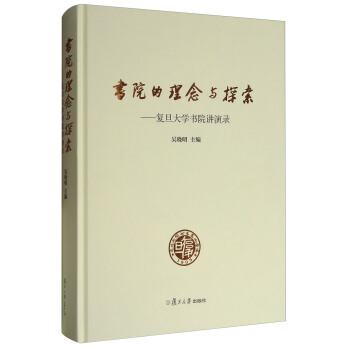

![中国最美书店:钟书阁 [Zhong Shuge:The Most Beautiful Bookstore in China] pdf epub mobi 电子书 下载](https://pic.tinynews.org/12169711/59b8ad58Ncd9a6ba4.jpg)

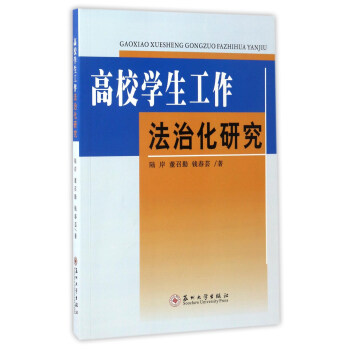
![铁血与音符:德国人的民族性格 [How to Treat the Germans] pdf epub mobi 电子书 下载](https://pic.tinynews.org/12170295/599fd2f3N77453a3f.jpg)
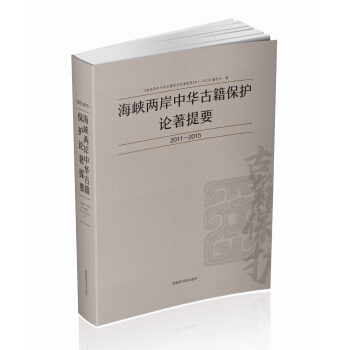

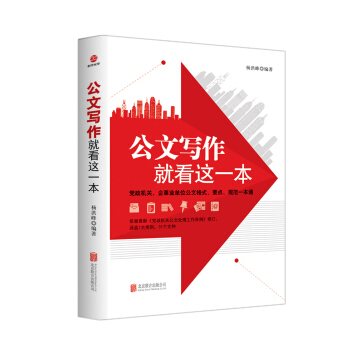


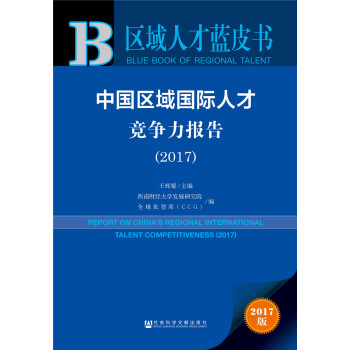
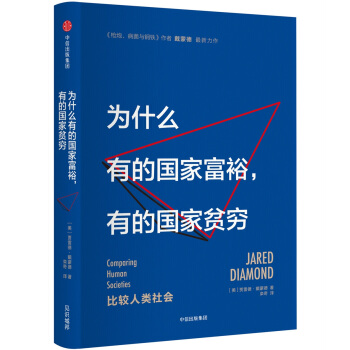

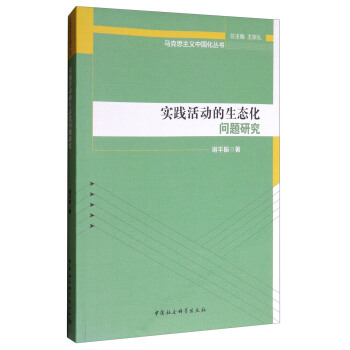
![中国社会科学院国情调研丛书·性别偏好与性别选择:少数民族出生人口性别比问题研究 [Gender Preference and Sex Selection:Research on the Sex Ratio at Birth of the Minority Population] pdf epub mobi 电子书 下载](https://pic.tinynews.org/12171913/59b67645N3dfb875f.jpg)
